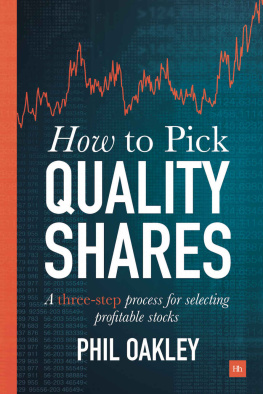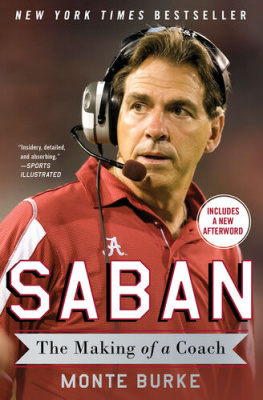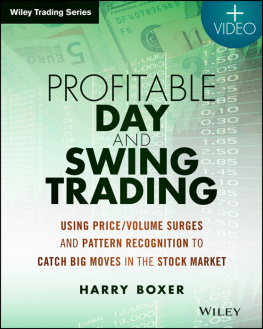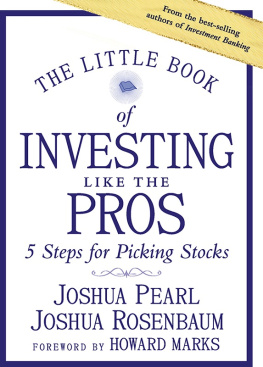Phil Oakley - How to Pick Quality Shares: A three-step process for selecting profitable stocks
Here you can read online Phil Oakley - How to Pick Quality Shares: A three-step process for selecting profitable stocks full text of the book (entire story) in english for free. Download pdf and epub, get meaning, cover and reviews about this ebook. year: 2017, publisher: Harriman House, genre: Business. Description of the work, (preface) as well as reviews are available. Best literature library LitArk.com created for fans of good reading and offers a wide selection of genres:
Romance novel
Science fiction
Adventure
Detective
Science
History
Home and family
Prose
Art
Politics
Computer
Non-fiction
Religion
Business
Children
Humor
Choose a favorite category and find really read worthwhile books. Enjoy immersion in the world of imagination, feel the emotions of the characters or learn something new for yourself, make an fascinating discovery.
- Book:How to Pick Quality Shares: A three-step process for selecting profitable stocks
- Author:
- Publisher:Harriman House
- Genre:
- Year:2017
- Rating:5 / 5
- Favourites:Add to favourites
- Your mark:
- 100
- 1
- 2
- 3
- 4
- 5
How to Pick Quality Shares: A three-step process for selecting profitable stocks: summary, description and annotation
We offer to read an annotation, description, summary or preface (depends on what the author of the book "How to Pick Quality Shares: A three-step process for selecting profitable stocks" wrote himself). If you haven't found the necessary information about the book — write in the comments, we will try to find it.
Phil Oakley: author's other books
Who wrote How to Pick Quality Shares: A three-step process for selecting profitable stocks? Find out the surname, the name of the author of the book and a list of all author's works by series.
How to Pick Quality Shares: A three-step process for selecting profitable stocks — read online for free the complete book (whole text) full work
Below is the text of the book, divided by pages. System saving the place of the last page read, allows you to conveniently read the book "How to Pick Quality Shares: A three-step process for selecting profitable stocks" online for free, without having to search again every time where you left off. Put a bookmark, and you can go to the page where you finished reading at any time.
Font size:
Interval:
Bookmark:
How to Pick Quality Shares
A three-step process for selecting profitable stocks
Phil Oakley
Contents
About the Author
Phil Oakley is an investment analyst and private investor. He works for Ionic Information, the makers of the market-leading ShareScope and SharePad software for private investors.
Phil spent 13 years as a professional investment analyst, with ten years working for fund managers and stockbrokers in the City. He left the City in 2009 and began writing educational articles for private investors. He was senior investment writer for MoneyWeek for three years before starting his current role.
He holds the Chartered Institute of Securities & Investment Diploma and the Certificate in Private Client Investment Advice & Management.
Phil lives in Essex with his wife and two children. You can read more of his writing at www.sharescope.co.uk/philoakley .
Preface
What this book covers
T his book is about how investors can assess companies and find good share investments by following a three-step strategy to analyse company financial information. The strategy boils down to finding quality companies, avoiding dangerous or risky companies, and not paying too much for companies shares.
For the first step, I show you how to identify companies that are capable of earning you a high rate of interest on your investment. These are the kind of companies that can prove to be profitable investments over the long term. You may not be accustomed to thinking of an investment return as a rate of interest, but I will show you that this can help you understand companies and their shares better, and make you a better investor.
Next, good investing is just as much about risk as it is about returns. By avoiding risky companies, you stand a better chance of being a successful investor. I show you how to spot the warning signs of companies that would make bad investments.
Third, no matter how good a company is, its shares are never a good buy at any price. I show how to value a companys shares and determine what is a reasonable price to pay. I also show that whilst you should always try to buy your shares as cheaply as possible, it is important to realise that sometimes you have to pay more for quality companies.
Following these three steps, you are trying to answer three important questions about a company:
1.Is it a quality business?
2.Is it a safe business?
3.Are its shares cheap enough are they good value?
I use real companies as examples throughout the book. In particular, I focus on Dominos Pizza. This is because it is a high-quality company that most people should find easy to understand, whilst allowing me to illustrate many of the things you need to look for in order to follow the three-step strategy.
The focus in the book is on UK companies, but readers can use the techniques to analyse companies anywhere in the world.
To make use of the process described in the book, you will need to have access to company accounts and financial statements. These are publicly available for all stock market-listed companies. You can find this information in the investor section on company websites, or in commercial stock market software packages.
Note that the approach in the book is very much one of quantitative analysis looking at company financial information. Qualitative analysis such as looking at the character and capability of company management is not part of the process described here.
Also note that this book is to be used to appraise investments in non-financial companies. The tools of analysis found in this book are not suitable for looking at banks or insurance companies, which require a different approach.
Who this book is for
This is not a book aimed at complete beginners. It is aimed at the more experienced investor who manages his or her own portfolio of individual shares.
Readers should have some knowledge about company accounts. You should have a general understanding of an income statement, balance sheet and cash flow statement. Terms like assets, liabilities, cash inflow and cash outflow should be familiar to you. I explain how to get the most from these valuable bits of information.
The mere thought of numbers and maths can frighten some people and make them think that investing is too difficult. I will show you that this is not the case. It is not necessary to have a high IQ or to have a degree to become a good investor and as long as you understand basic GCSE-level arithmetic you will be fine.
This book is aimed at long-term investors rather than short-term traders. It is not about getting rich quickly, but about finding companies to invest in over a long period of time perhaps for the rest of your life.
To get the most from this strategy you should be prepared to spend some time researching companies when you are building your portfolio. Once your portfolio is set up, looking after it should not take up much of your time.
Investors do not need to own lots of shares. A portfolio of 10 to 15 shares spread across different industries is sufficient to get good, diversified investment results. My view is that an individual investment of 3000 to 5000 in each company is an acceptable minimum, which means that you will need a minimum of 30,000 at the outset before you begin investing.
More than anything, this is a book for people who are independent thinkers and are confident in trusting their own judgement whilst ignoring the huge amount of noise and chatter that goes on in the investing world.
How this book is structured
The structure of this book is based around the three-step process for finding good companies, avoiding dangerous companies and buying shares at a reasonable price. The three main parts of the book mirror these three steps.
Part 1: How To Find Quality Companies
Part 1 is all about the hallmarks of quality companies and how you can spot these in a companys accounts.
I show how to work out a companys interest rate on the money it invests, which measure of profit to focus on, and why you should make a companys cash flow one of the main focuses of your attention.
Part 2: How To Avoid Dangerous Companies
Successful investing is just as much about avoiding bad companies as it is picking good ones. Just as you wouldnt buy a house without checking if it is structurally sound, you shouldnt invest in a share without seeing if it has any nasty risks that could cost you money.
In Part 2, I look in detail at the issue of debt, when it can be dangerous and how it can fool investors. I then discuss the often-overlooked issues of hidden debts and pension fund black holes.
Part 3: How To Value A Companys Shares
Part 3 begins with a basic lesson on how shares are valued. I then go on to show you why some of the most common shortcuts used to value shares are not very useful and indicate what you should be doing instead.
I then look at how to calculate a companys cash profits so that you can value a companys shares properly. Once this has been done you will then be able to work out the cash interest rate a share will earn you, which enables you to compare it with the interest rate you earn on other investments. You can then work out the maximum price you should pay for it.
Finally, I look at the importance of growth to the value of shares. You will learn to work out the stock markets expectation of future profit growth from a companys share price and also see how you can lose a lot of money when profits stop growing.
Appendices
In the Appendices I include the results of a 2016 experiment into a lease-adjusted version of Joel Greenblatts Magic Formula, and also a table showing results for investment quality measures (as defined in Part 1) for companies from the FTSE 100. Finally, I provide examples of 15 high-quality companies that would have been very strong performing investments over the ten years since 2007.
Next pageFont size:
Interval:
Bookmark:
Similar books «How to Pick Quality Shares: A three-step process for selecting profitable stocks»
Look at similar books to How to Pick Quality Shares: A three-step process for selecting profitable stocks. We have selected literature similar in name and meaning in the hope of providing readers with more options to find new, interesting, not yet read works.
Discussion, reviews of the book How to Pick Quality Shares: A three-step process for selecting profitable stocks and just readers' own opinions. Leave your comments, write what you think about the work, its meaning or the main characters. Specify what exactly you liked and what you didn't like, and why you think so.










